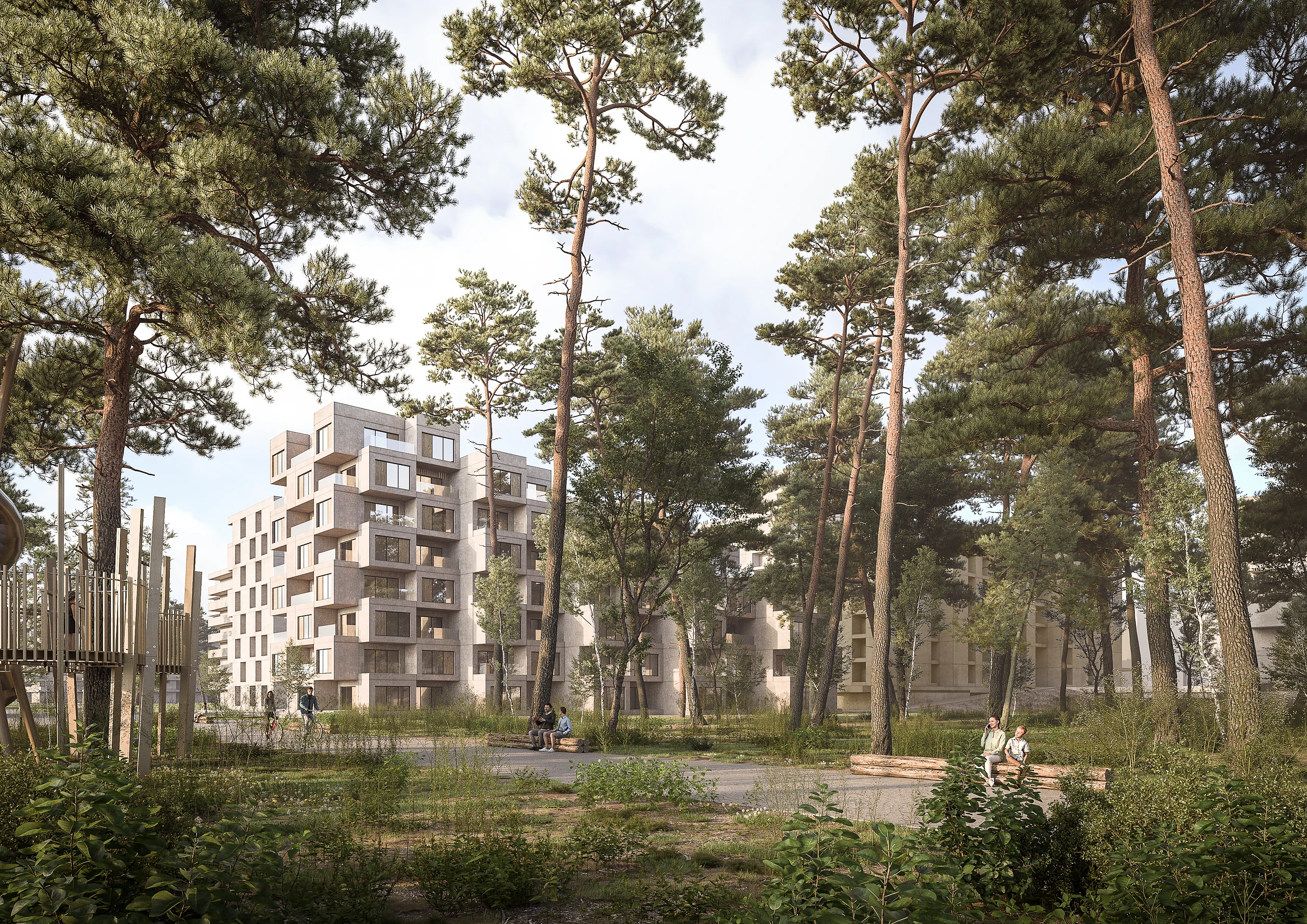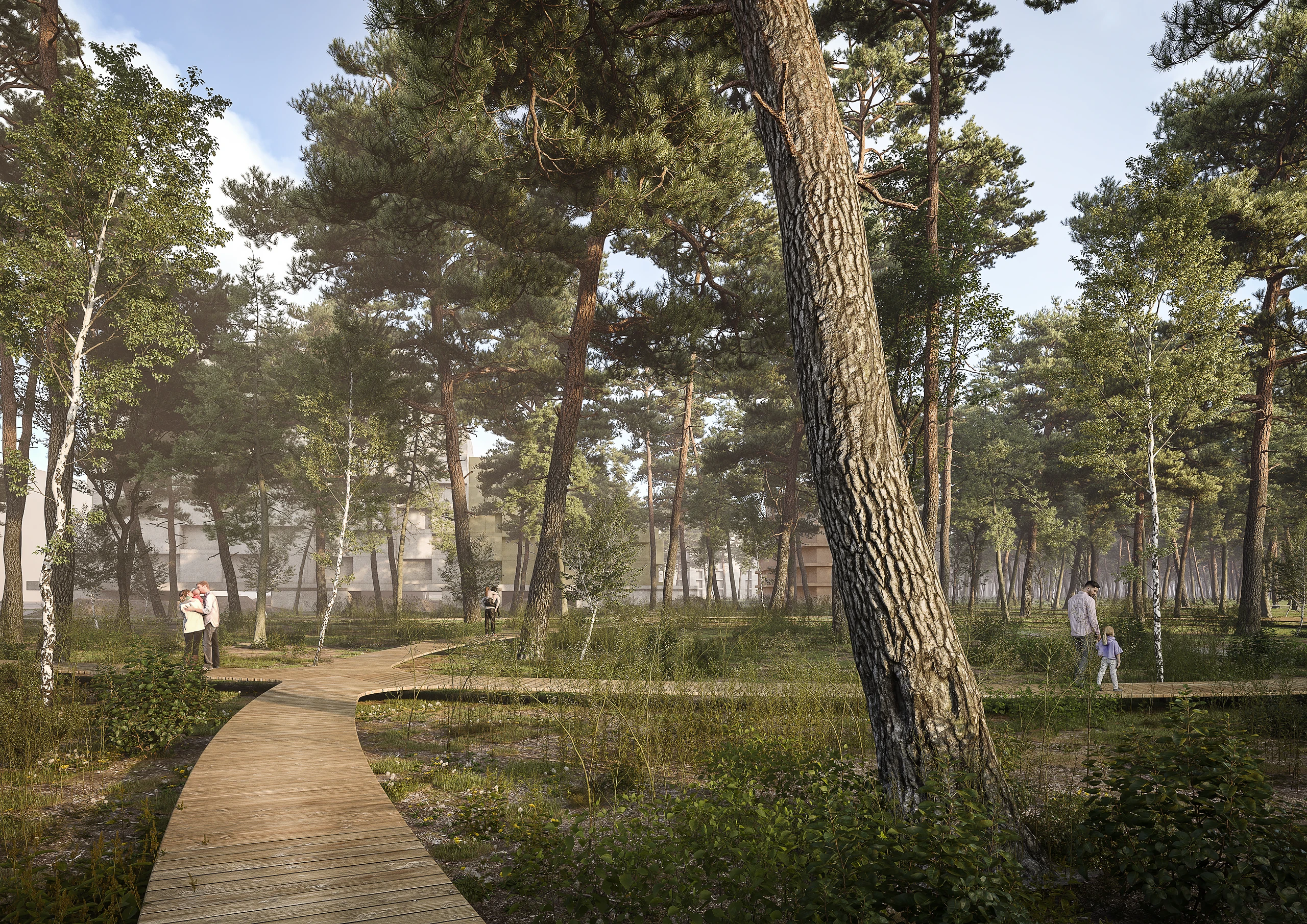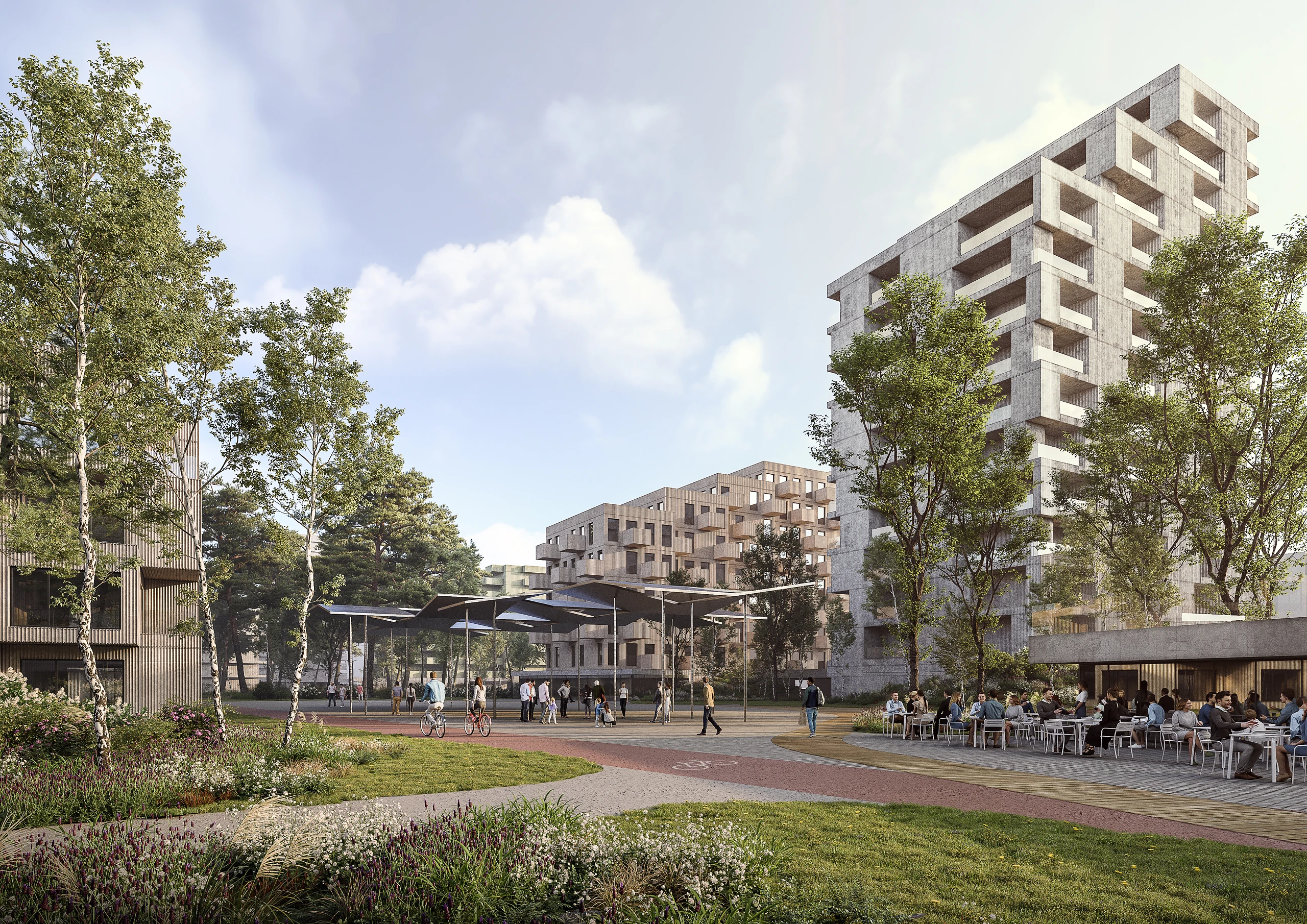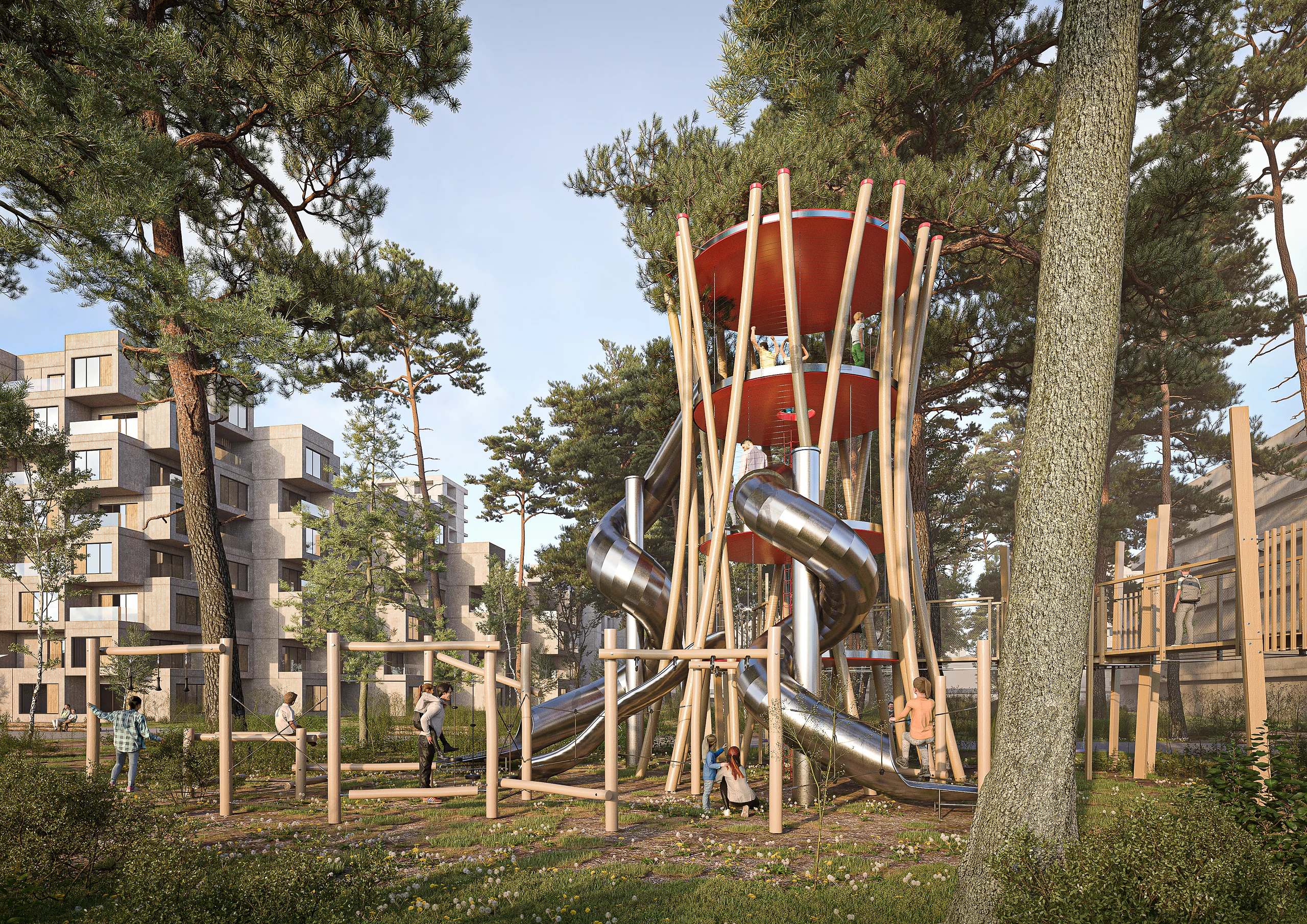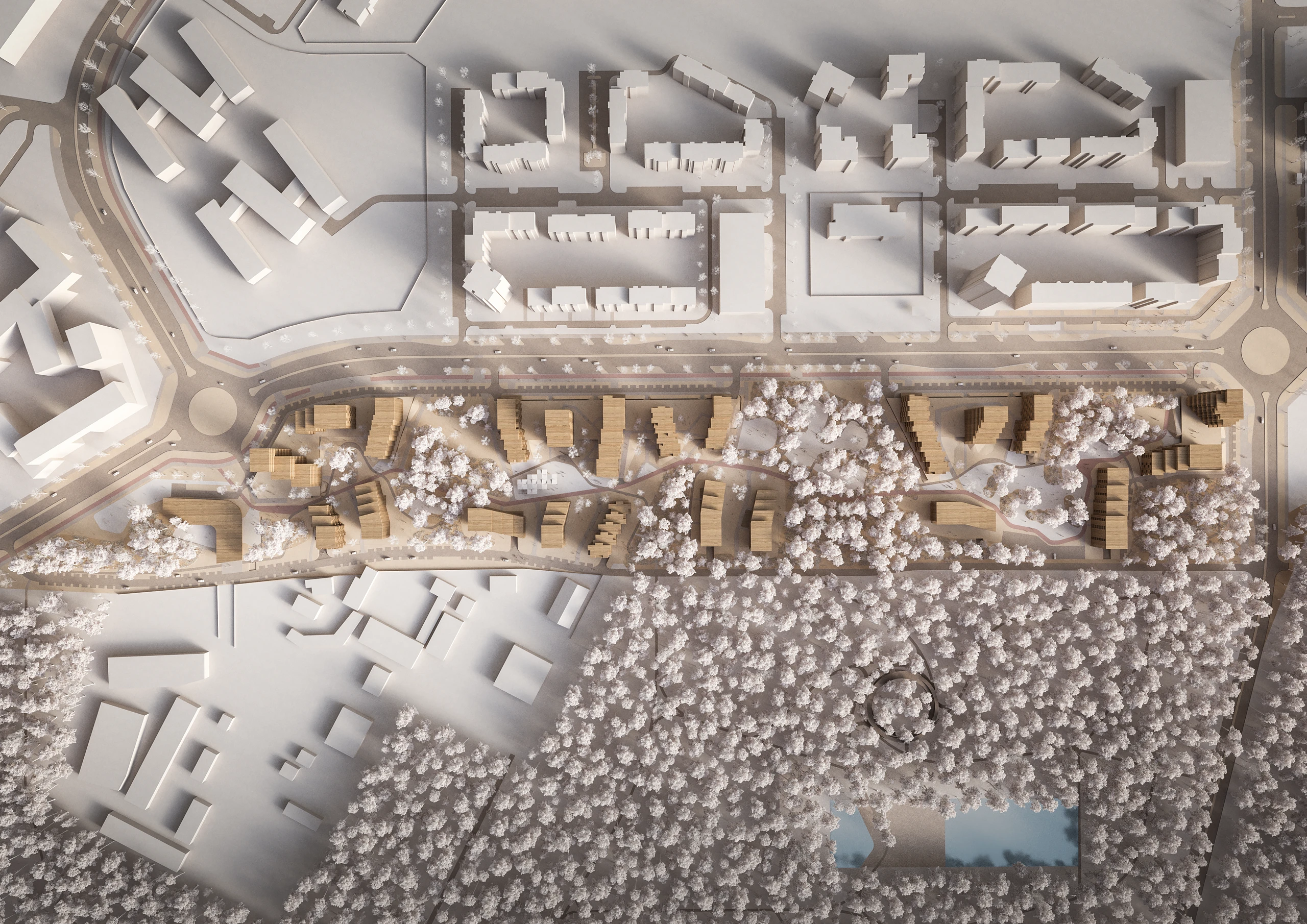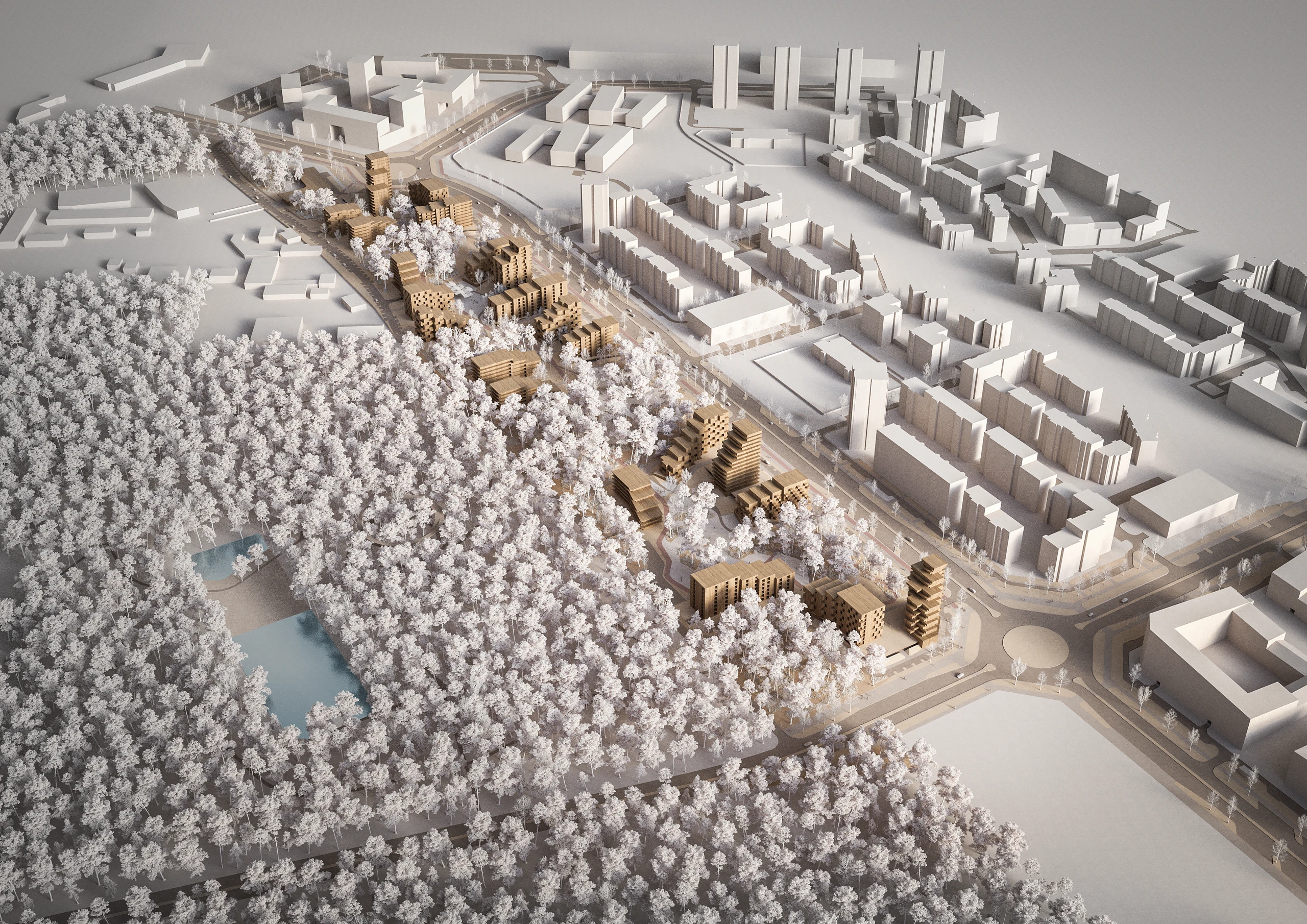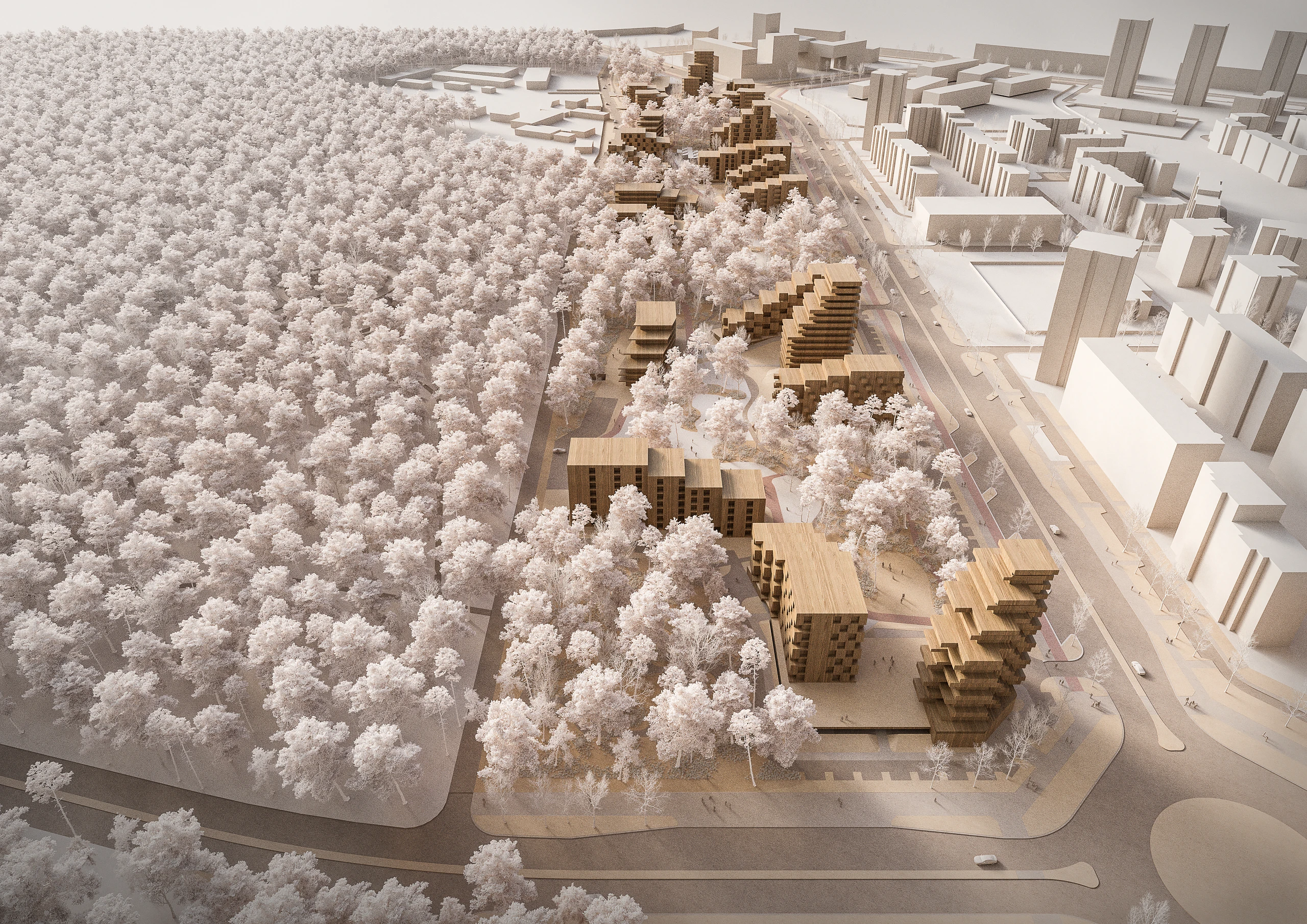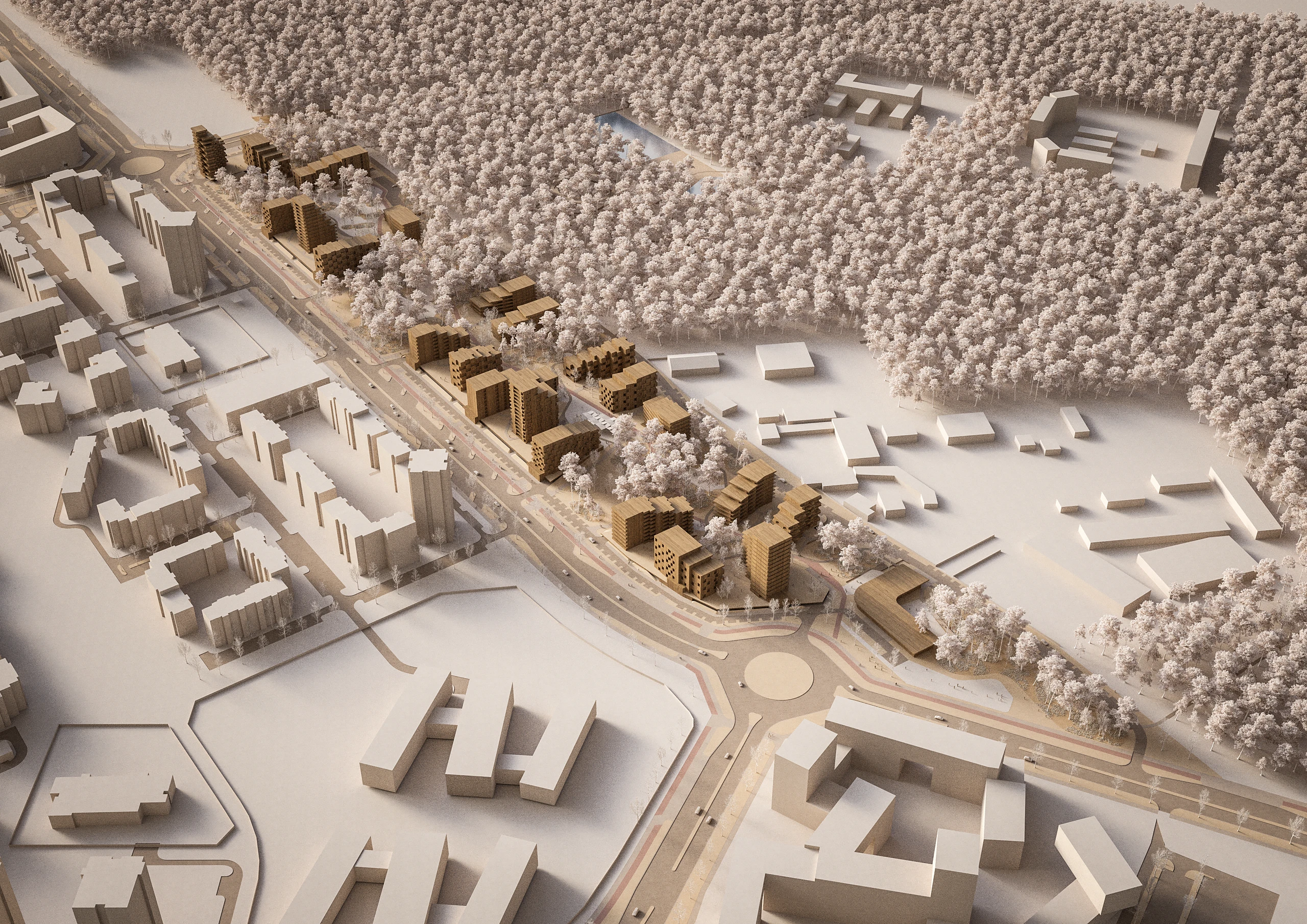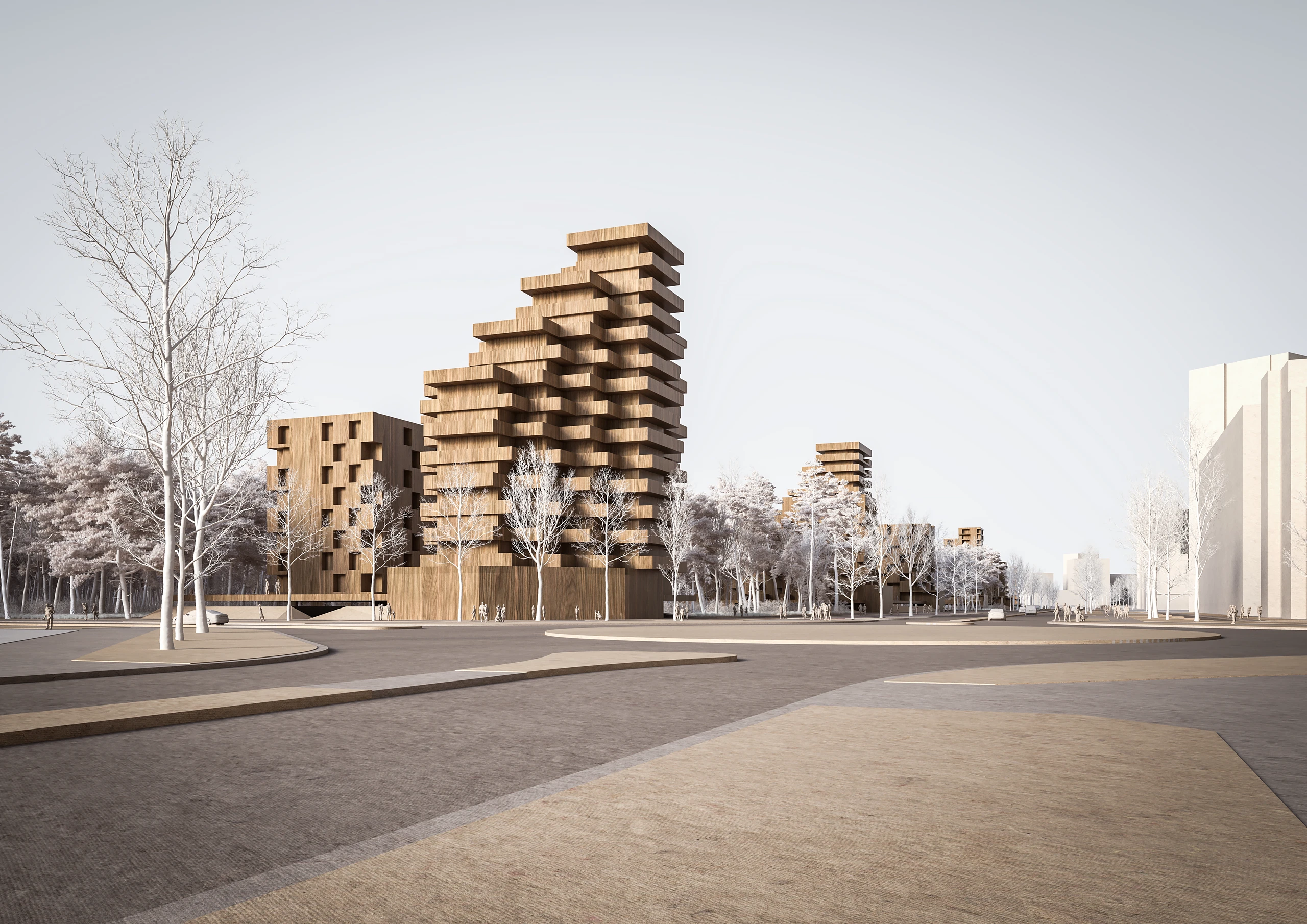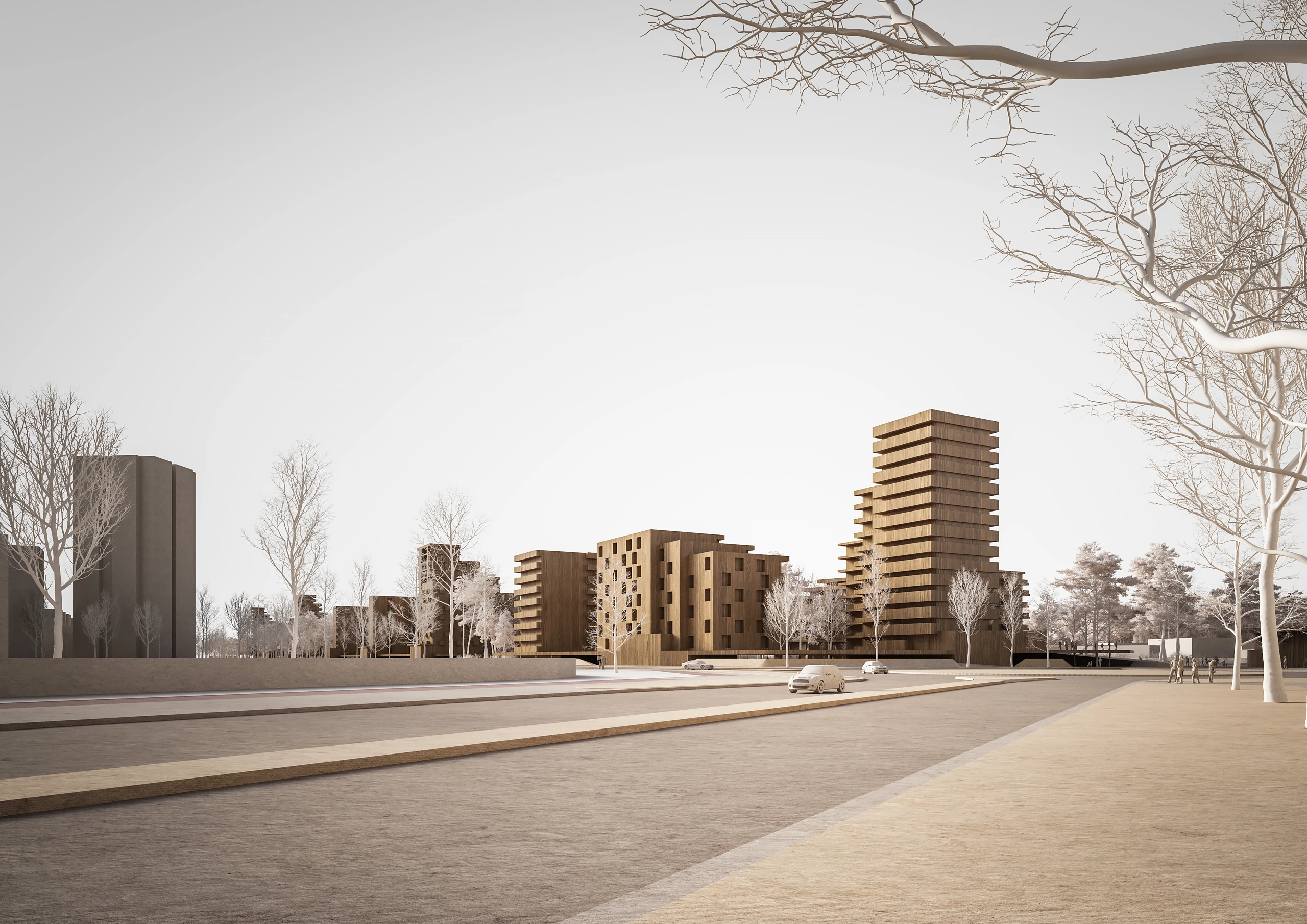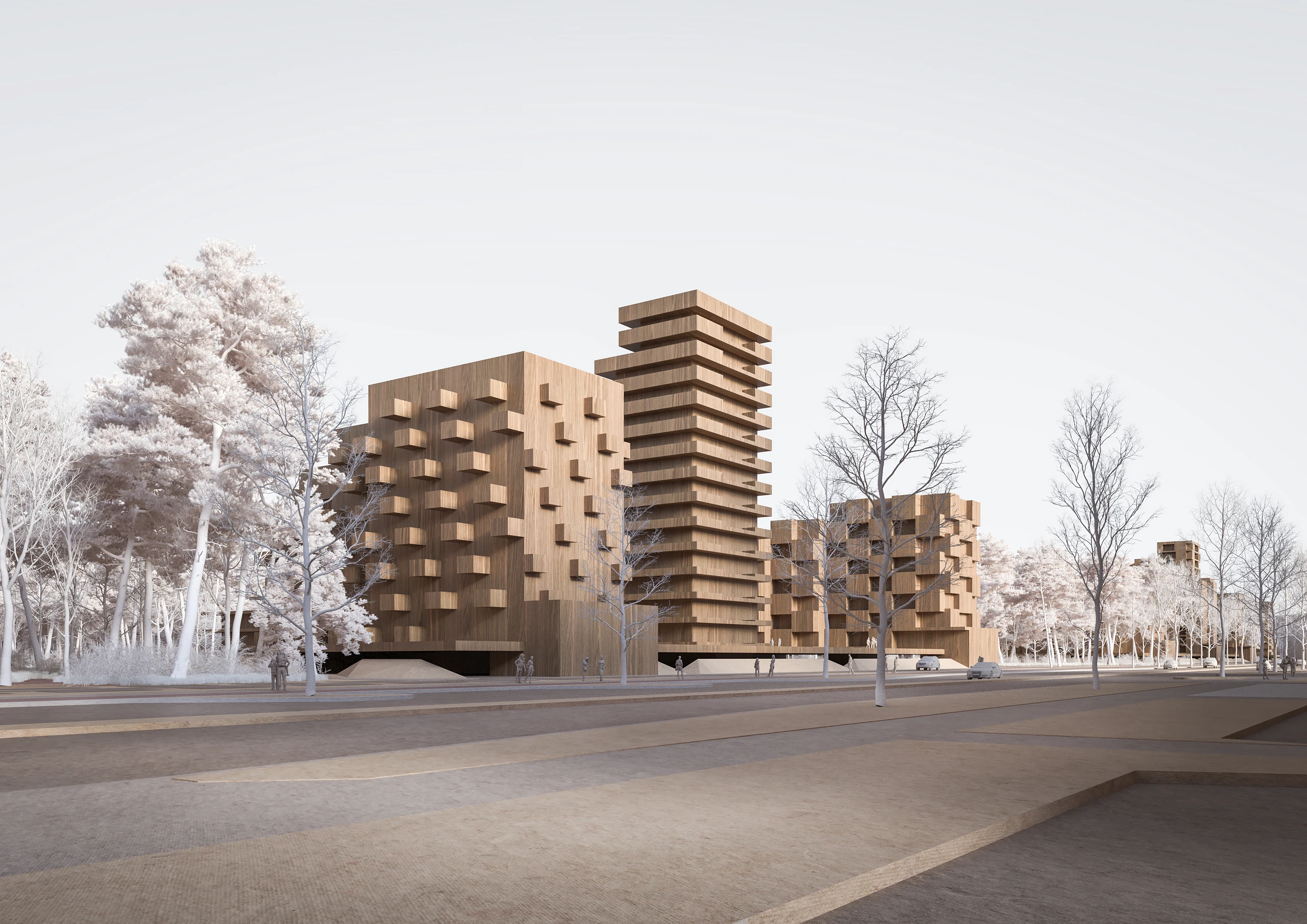- Location: Minsk, Belarus
- Program: Masterplan, Residential
- Area: 187.000 m²
- Year: 2021
- Status: Competition
The masterplan concept for NBM is the result of an in-depth analysis of both the prevailing construction methods in Belarus and the specific characteristics of the site. In Belarus, the architectural landscape is dominated by prefabricated concrete solutions dating back to the Soviet era. While the modularity and repetitiveness of such designs have played a crucial role in providing affordable housing, they often compromise urban and architectural quality. Embracing the positive aspects of this precast concrete technology, the master plan reimagines its application. Moving away from the conventional model of closed, gated communities characterized by individual blocks, each with its own courtyard, often crowded with parking, the plan proposes an open, flexible layout. This layout not only preserves but enhances the existing landscape and forest that extends into the site, integrating it as a central element of the design. The building blocks, while conforming to a super grid to facilitate optimal parking solutions, are thoughtfully positioned and aligned with the natural topography to honor the existing natural environment and enhance the flow dynamic.
The design relegates vehicular access to the periphery, transforming the core area into an expansive pedestrian realm. This central pedestrian area evolves into a large park that connects the entire neighborhood and provides a much-needed natural oasis in a densely populated area. The park is envisioned as a dynamic space that will cater to the diverse needs of the community, offering a range of amenities. These include a kindergarten, multiple playgrounds, an educational urban farm for children, outdoor fitness areas, a swimming pool, a dedicated sports zone, picnic areas, and a versatile urban canopy designed to host a range of community events. The inclusion of restaurants and cafes with park-facing terraces further enriches the residential experience within the district, making it an attractive and comfortable place to live.
In a thoughtful approach to enhancing the user experience within the park zone, building heights are strategically reduced near the central green space and gradually increased toward the periphery. This modulation of building heights, combined with a revised modular system, allows for a variety of architectural expressions, giving each building its unique identity and style.
The masterplan is a testament to contemporary living standards, responding to market needs while pioneering modular construction techniques. It aims to promote a new quality of living that blends the demands of modern living with sustainable and community-centered design principles. Through this approach, the masterplan sets a new benchmark for residential development, offering a model that is both innovative and responsive to the evolving dynamics of urban living.

